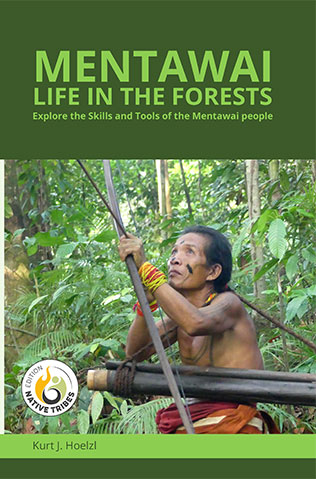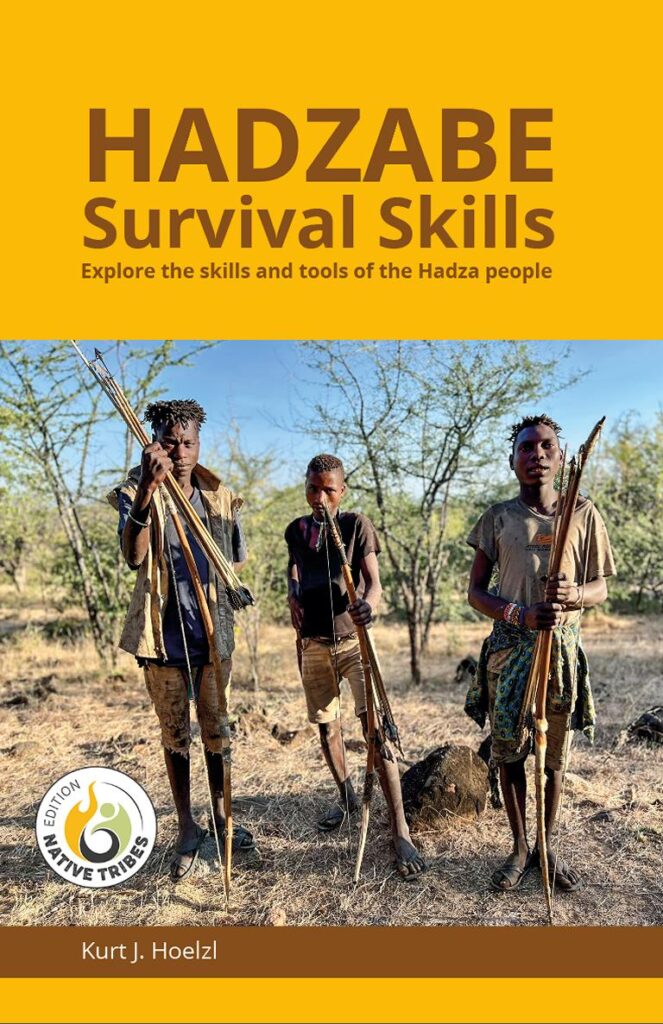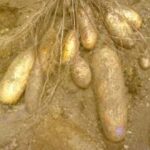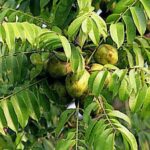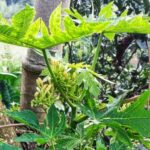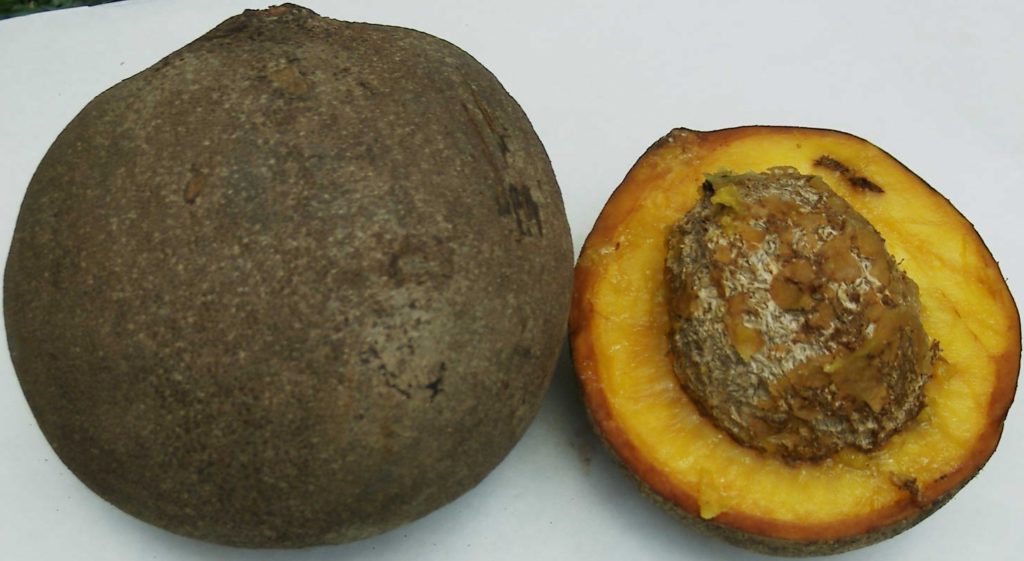
Common names are Mafambu, Dimbu dingi (dingi = gum, resin, incense) (Kongo), Bokodji (Lingala), African mammee apple, Oboto or Djimbo (commerce). Scientific name: Mammea africana.
Description
A large forest tree up to 45 m tall with a straight, cylindrical trunk and scaly brown bark. The inner bark yields a yellowish resin. Leaves are opposite, glossy, 9 – 35 cm long and 3 – 13 cm wide. Young leaves are copper-red. The flowers are produced in leaf axils and are either bisexual or male. Bisexual flowers are solitary, white, and up to 2.5 cm long. Male flowers are borne in clusters and are smaller than bisexual flowers. Bisexual and male flowers are produced on different trees. The numerous round to pear-shaped fruits have a rough outer skin and are 10 – 18 cm in diameter. They are pale yellow to orange, with many warts. The yellowish-white fibrous flesh contains 1 – 4 seeds. Mass fruiting occurs every 2 – 3 years.
Ecology
Occurs in evergreen to semi-deciduous forests. The tree prefers fertile forest soils with plenty of moisture. Present from Senegal to Uganda and south to D.R. Congo and Angola.
Propagation
Soak the seeds in water for 24 hours. Plant in a shady place. Germination is irregular taking up to 8 months but can be up to 90%. Seedlings are slow-growing.
Uses
The wood is hard and heavy and lasts well. It is easy to work and is used for construction, general carpentry, furniture, and canoes. The fruits are eaten when completely ripe. They are left to fall to the ground. When they become soft, they are sliced and eaten. The skin is not eaten. The white-yellow pulp is sweet but rather fibrous. However, some trees produce acid-tasting fruit. Rotting fruit attracts snails which are also eaten. Seeds are edible and contain oil which can be used for cooking. Resin is used to repair earthenware. The shells were traditionally used as bells for hunting dogs. The flowers are known to be visited by bees in Gabon.
References
Gillet & Paque 1910, Gillet 1927, Renier 1948, Bamps 1970, Ambougou 1991, Pauwels 1993, Vivien & Faure 1996, Danforth & Noren 1997, Lemmens 2008, Kibungu Kembelo 2010
___________________________________________________________________________________________________________
Text at this article © Paul Letham. The professional background and contact information of the author of this article can be found here.
.

